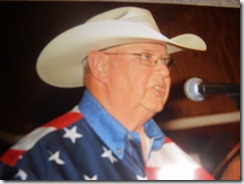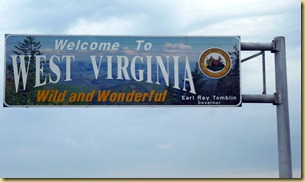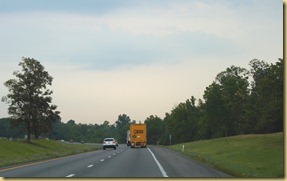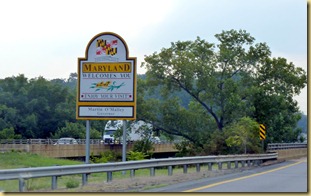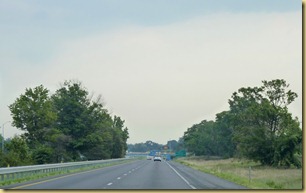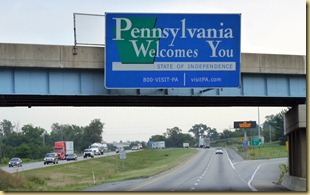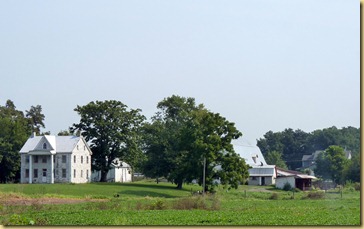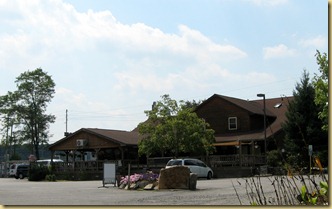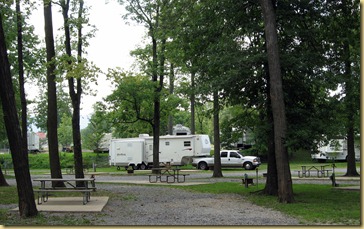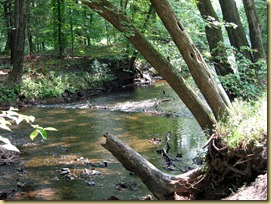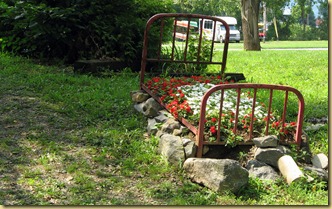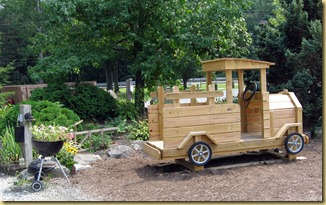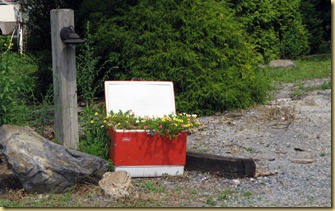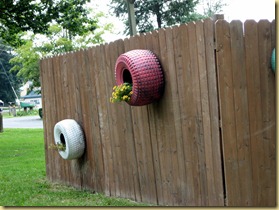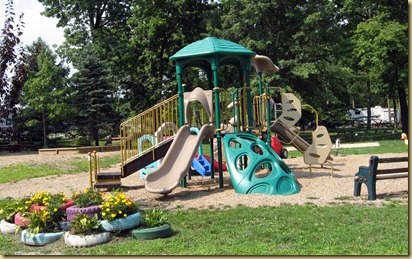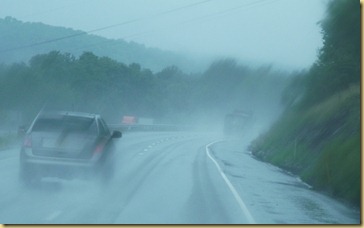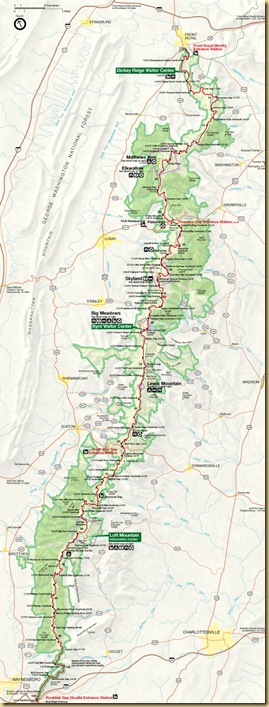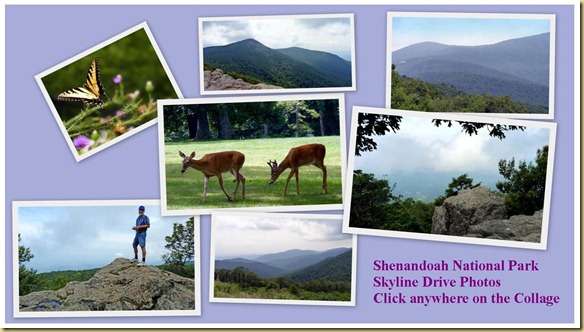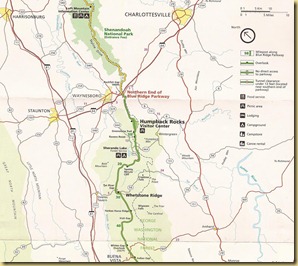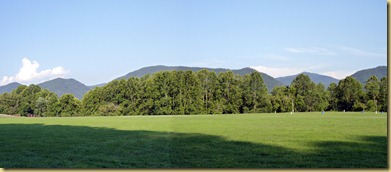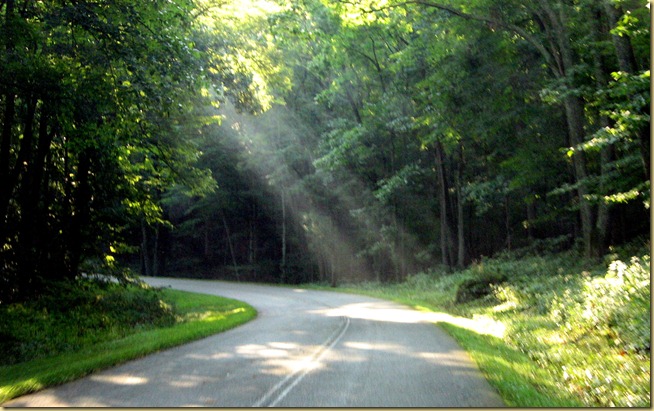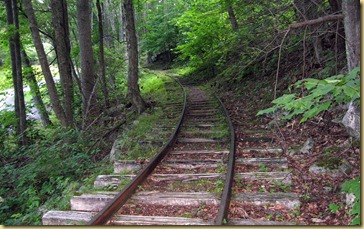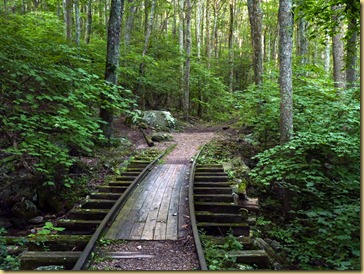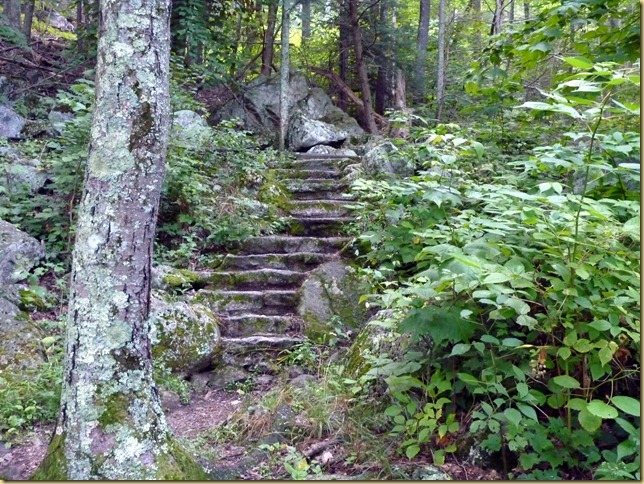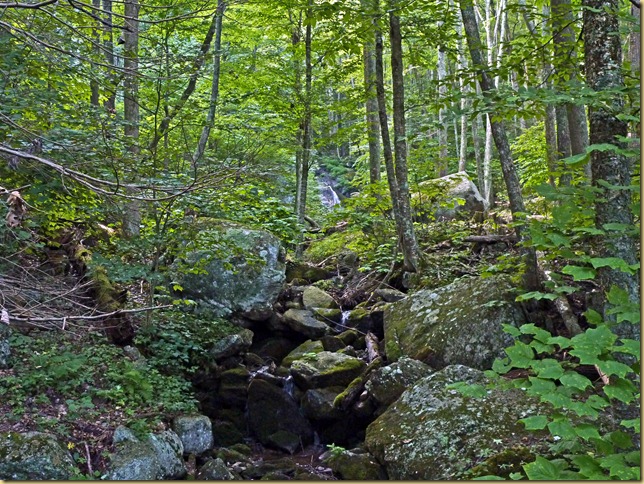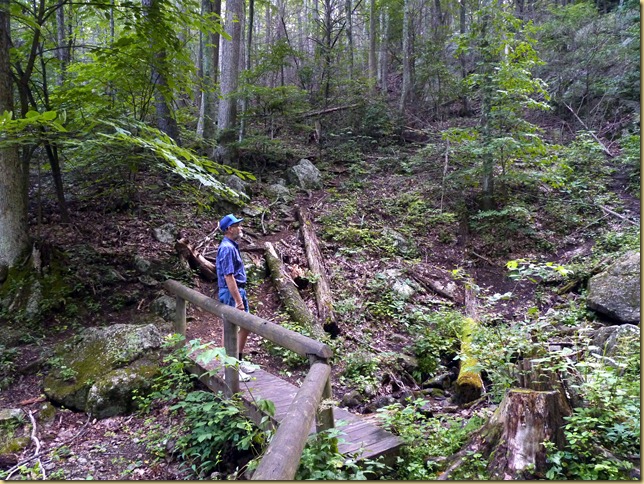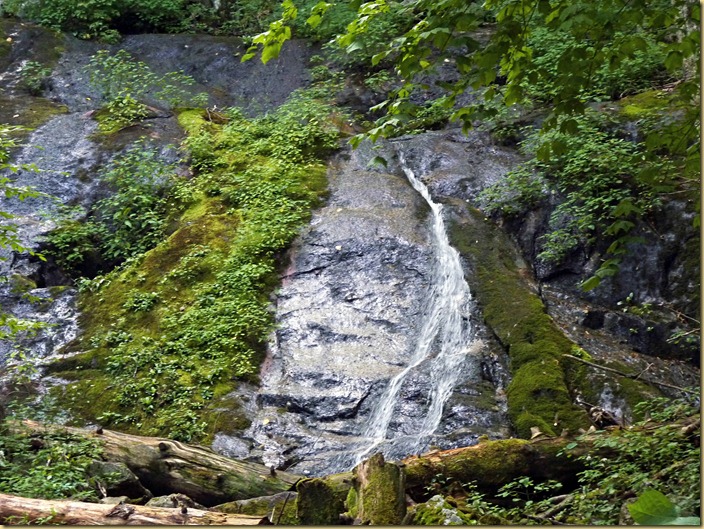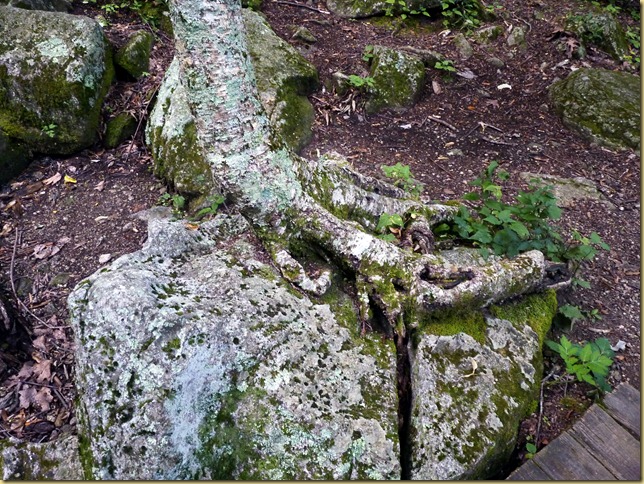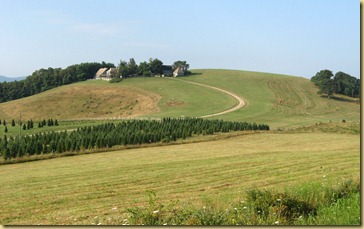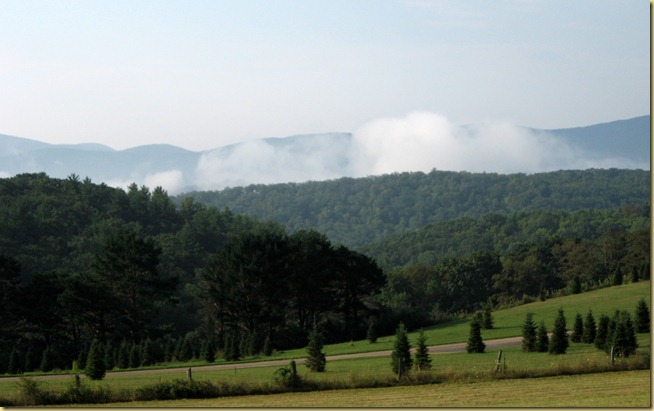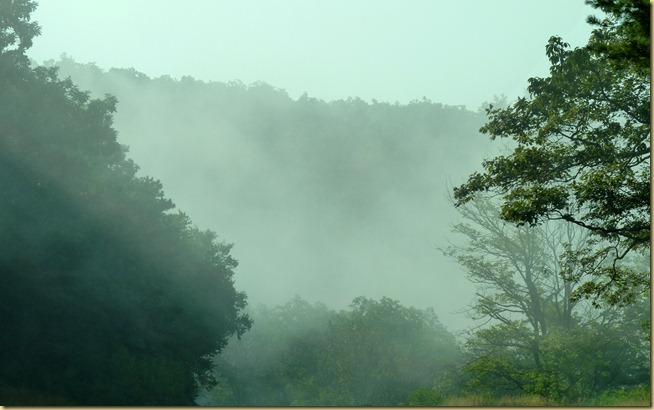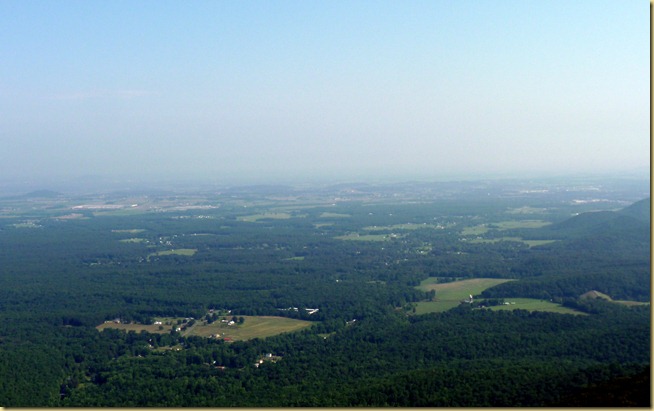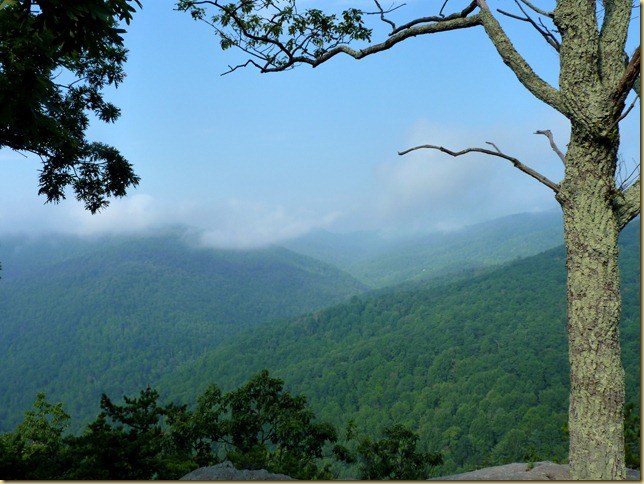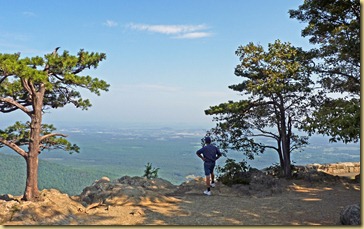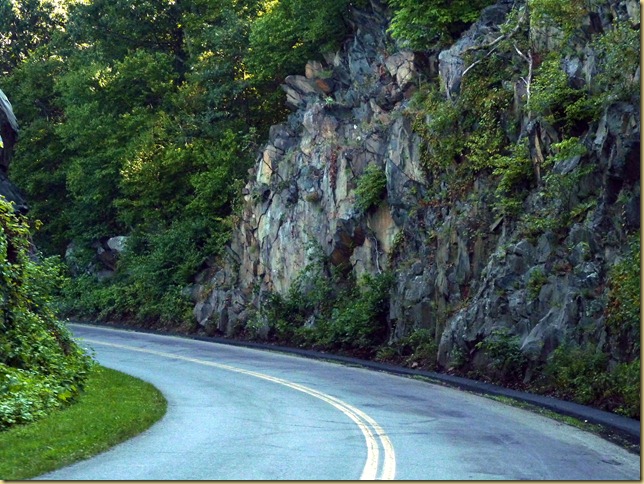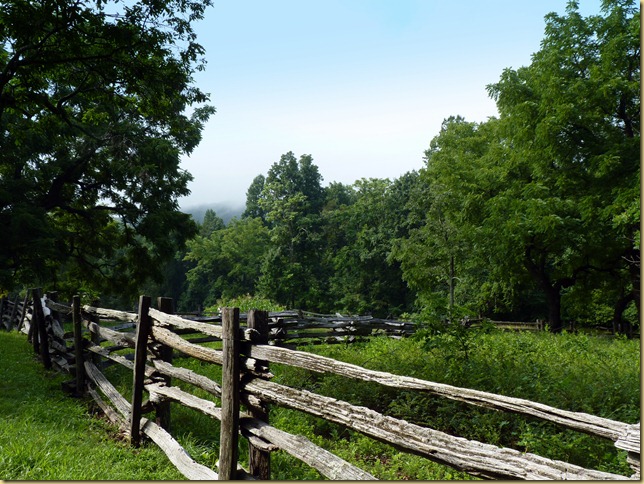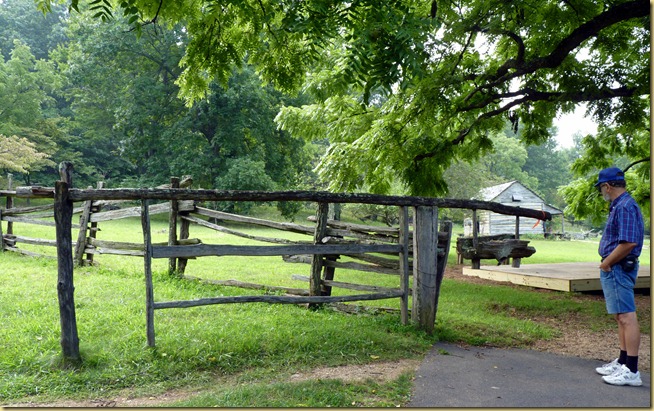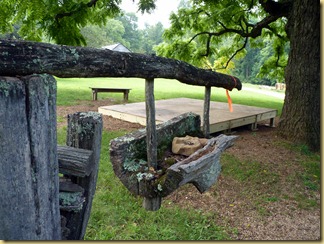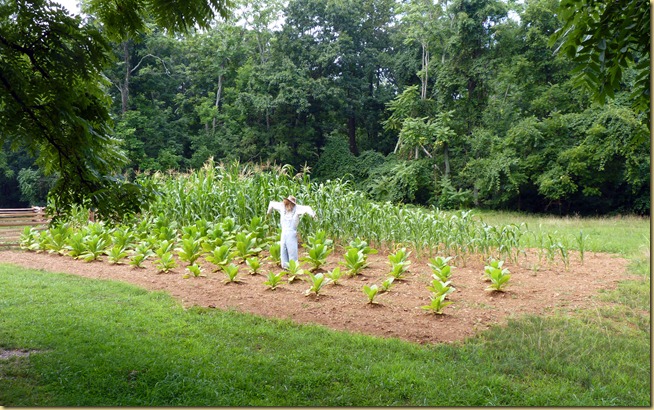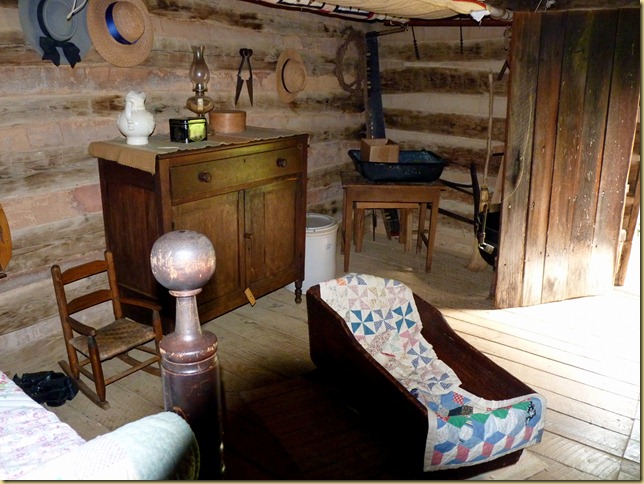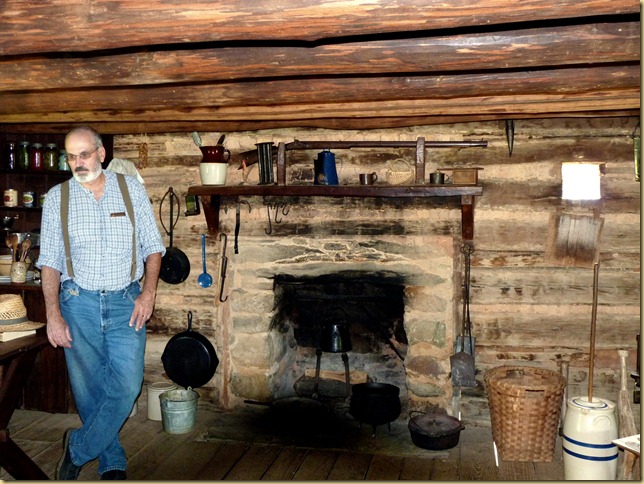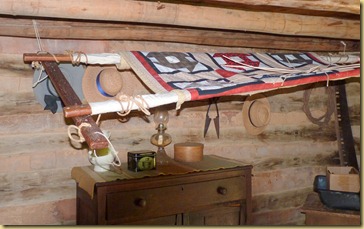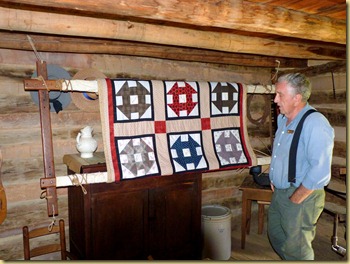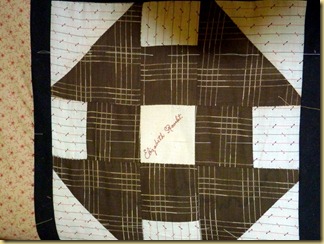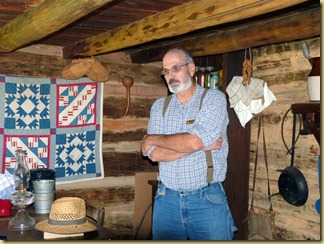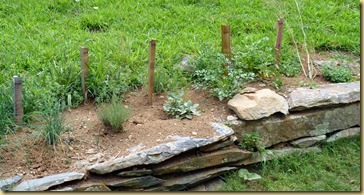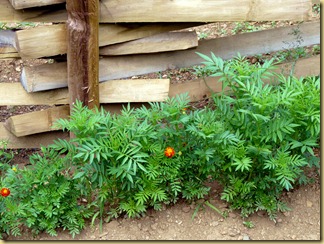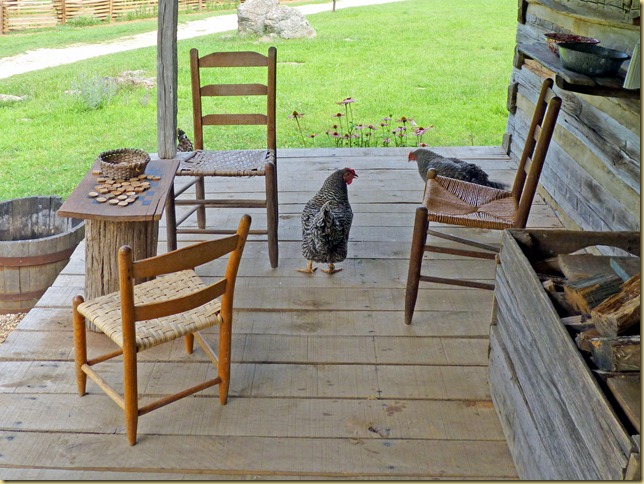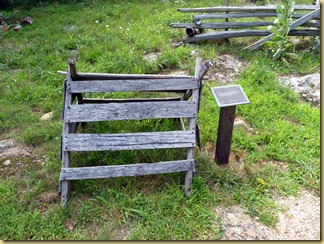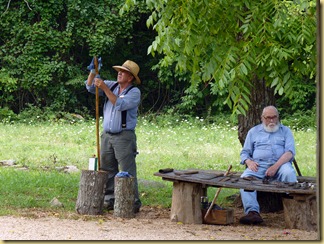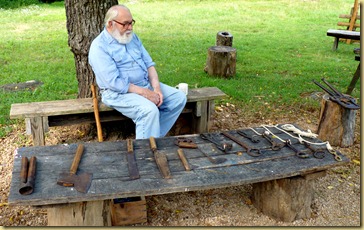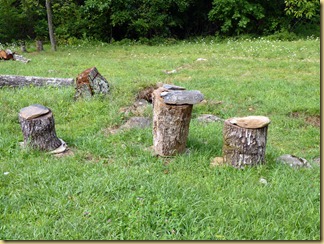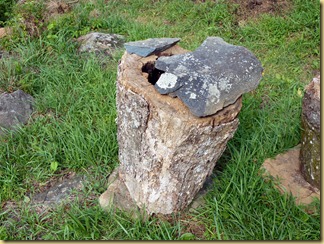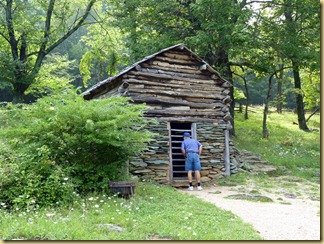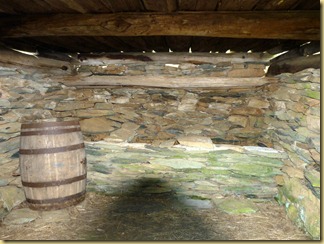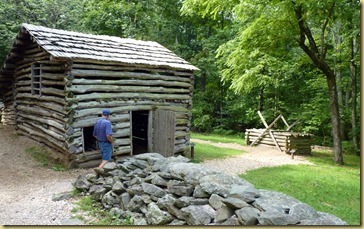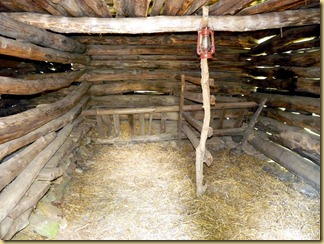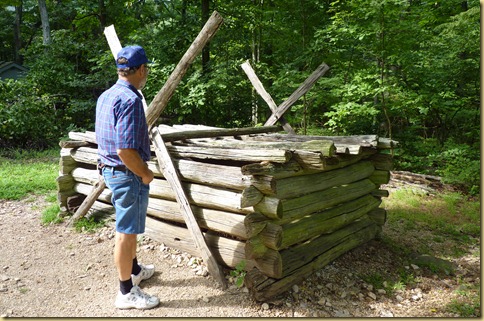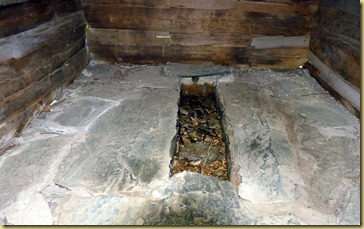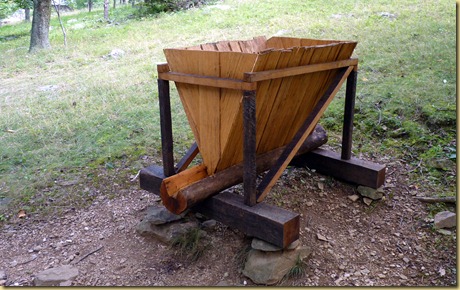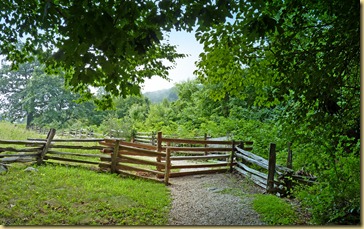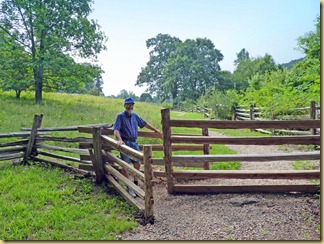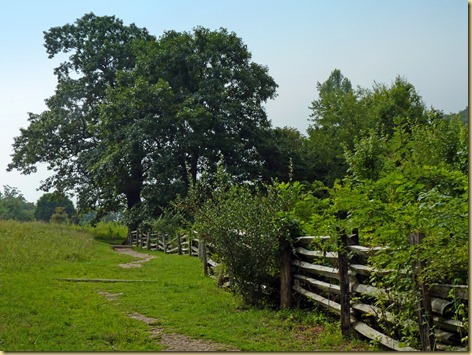(submitted by Ron and Anita Adamson)
We spent the weekend in the Country Music Park, an RV campground in Cortland, NY.
That’s us on the end.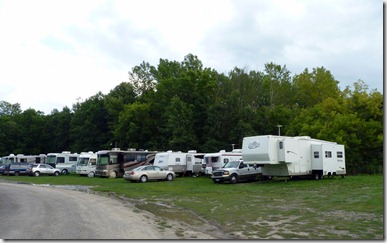
It’s an attractive park in the country, with a lake and the RV sites around the perimeter.
The park was developed in the 80’s to provide a home for the New York State Country Music Hall of Fame. When I called to make the reservation, I was told there was a square and round dance this Saturday evening.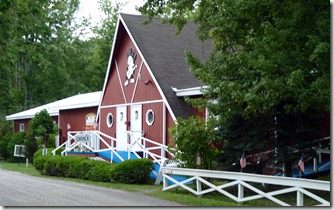
After arriving, we talked to a few of the “local” campground residents. When we inquired as to the level of the dance, we were met with blank squares. Is it Mainstream or Plus?… “I don’t know, just square dancing”. What about the round dancing? “Oh, just everyone does their own thing? …although there are some “two steppers”. We weren’t sure what these responses meant.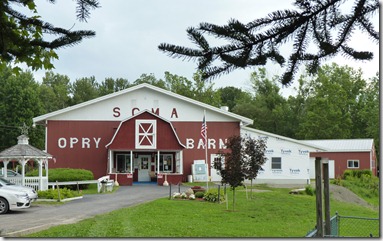
On arriving at the dance, held in their Opry Barn, we found out! A live country western band, Doc Weismore and Real Country, played, featuring classic country from the 60-70s era.
Ron talked with Doc, the leader of the band and caller. Doc didn’t know anything about levels, but it was “easy”…they probably did a few things we weren’t familiar with, but he’d help us. We’d be fine, according to Doc.
At the first song, dancers filled the floor for casual dancing. We soon picked out the “two steppers”. They were dancing what we’ve seen in the past as couple line dancing, but each couple had their own routine.
About 20 minutes later, the lights were raised, and Doc Weismore announced, “Square Dance Time”. I (Anita) told Ron, I’m not dancing the first tip…we’ll watch and see what they’re doing”. Well, wouldn’t you know it… 2 squares formed, and they needed one more couple. I held Ron back, but no one got up, so reluctantly I went.
Finally, it dawned on us… they dance what is know as “old time or traditional square dance”. The only calls we recognized were allemande right, dosido (they pass left shoulders instead of right), and right and left grand (they repeat it twice, passing up your partner the first time, and you end up at home).
If you’ve never danced traditional, the “calls” are patterns. Couple #1 performs a set of moves, interacting with each of the other couples in turn. Then couple #2 has their turn and so on. Much of it was very different dancing from what we know as square dancing, but easy to follow. Each song contained patterns different from the others, with the exception of the three calls mentioned above. We were told there are no lessons for Traditional Square Dance; you learn by doing. There are generally no clubs, no “attire”, no organization to speak of; you just find a place offering square dancing on a Saturday night. Evidently, that’s what most square dancing (if not all) in this area means.
We had a lot of fun, and didn’t break down any squares. Each tip was made of 3 songs, no patter calls. It was our first time to square dance to a live band as well.
The dancers seemed glad to have us, and eager to help us out. In fact, we have found everyone we’ve encountered in the state of New York to be friendly and welcoming.
I don’t have any photos that I took. When not square dancing, the lighting was too low for photos, and when square dancing, we were on the floor.
However, I did find this you tube video of traditional square dancing. While not a routine we followed last night, it’s similar.
If you ever have the chance to try Traditional Square Dancing, go for it. Doc was right, you’ll be fine!
